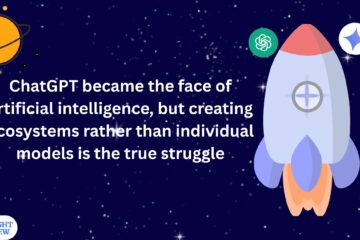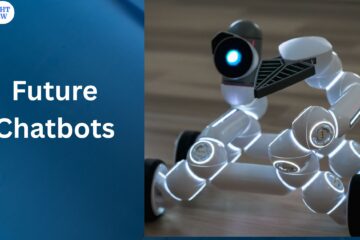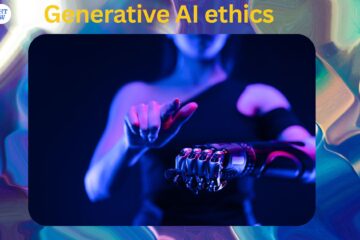Large Language Models (LLMs) have become the focus of attention for researchers, companies, and tech enthusiasts alike in the rapidly evolving field of technology. With their astounding ability to comprehend, produce, and modify text on a vast scale, these enormous language models have attracted the attention of people and institutions keen to utilise their potential. Additionally, the industry is booming with a number of new businesses, both startups and large tech firms, all vying for market share. However, underneath all of the hype about LLMs is the fact that understanding these models can be very difficult. They are an intricate combination of sophisticated natural language processing, data-driven insights, and cutting-edge technologies.
By exploring key topics such as how LLMs operate, their wide range of industry applications, their benefits and drawbacks, and how to properly assess them, we demystify them in this guide. Thus, let’s delve into the realm of LLMs and discover their possibilities and influence on the development of AI and communication in the future.
A large language model (LLM): what is it?
Large language models are distinguished by their size, which allows for the integration of billions of parameters to create complex artificial neural networks. Through the use of deep learning techniques and insights from large datasets, these networks leverage the power of sophisticated AI algorithms for tasks like assessment, normalisation, content creation, and accurate prediction.
LLMs handle extraordinarily large datasets in comparison to traditional language models, significantly enhancing an AI model’s functionality and capabilities. Although there is no exact definition for the term “large,” it usually refers to language models with at least one billion parameters, each of which represents a machine learning variable.
Spoken languages have developed over time to facilitate communication by offering structure, meaning, and vocabulary. Language models play a similar function in AI as the basis for idea generation and communication. Early AI models such as the ELIZA language model, which debuted at MIT in the US in 1966, are the ancestors of LLMs.Since then, a lot has changed.
These days, LLMs begin by being trained on a particular dataset and then develop through a variety of training methods, creating internal connections and allowing for the creation of new content. The foundation of Natural Language Processing (NLP) applications is language models. They enable users to ask questions in natural language, which causes responses to be generated that are pertinent and logical.
What distinguishes generative AI from large language models?
Although both generative AI and LLMs are important in the field of artificial intelligence, they have different functions in the larger context. As a subset of generative AI, LLMs—such as GPT-3, BERT, and RoBERTa—are focused on producing and understanding human language. On the other hand, generative AI includes a broad range of models that can produce text, images, music, and other types of content.
However, LLMs can now process and produce content in a variety of modalities, including text, images, and code, making them multimodal. This is a major development in LLM technology since it enables LLMs to engage with the outside world more thoroughly and carry out a greater variety of tasks. Although they are still in the early stages of development, multimodal LLMs like GPT-4V, Kosmos-2.5, and PaLM-E have the potential to completely transform how humans interact with computers.
LLMs are a tool, whereas generative AI is a goal. This is another way to conceptualise the distinction between the two. It’s also important to remember that although LLMs are an effective tool for creating content, they are not the only way to achieve generative AI. To produce content in their respective fields, various models are available, including specialised neural architectures for code generation, Generative Adversarial Networks (GANs) for images, and Recurrent Neural Networks (RNNs) for music.
LLMs are essentially a type of generative AI, even though not all generative AI tools are based on them.
Important elements of LLMs (large language models)
It is crucial to examine the main elements of an LLM to understand how it functions internally:
- Transformers
Transformer-based architectures, which have transformed the field of natural language processing, are typically the foundation upon which LLMs are built. These architectures are very effective for large-scale language tasks because they allow the model to process input text in parallel.
- Instructional Information
The extensive corpus of textual data that an LLM is trained on forms its foundation. This data includes text from books, articles, the internet, and other textual sources in a variety of languages and fields.
- Preprocessing and Tokenisation
Text data is converted into numerical embeddings that the model can use after being tokenised and divided into distinct units like words or subword segments. A crucial first step in comprehending linguistic context is tokenisation.
- Mechanisms of Attention
LLMs use attention mechanisms to give different parts of a sentence or text different weights. This enables them to comprehend word relationships and effectively capture contextual information.
- Parameter tuning
Optimising an LLM for particular tasks requires fine-tuning the model’s hyperparameters, such as the number of layers, hidden units, dropout rates, and learning rates.
How do large language models (LLMs) work?
The following basic steps can be used to describe how LLMs operate:
Input Encoding: Using pre-trained embeddings, LLMs transform a series of tokens (words or subword units) into numerical embeddings.
Contextual Understanding: To interpret the contextual relationships between tokens in the input sequence, the model utilises several layers of neural networks, typically based on the Transformer architecture. These layers’ attention mechanisms enable the model to determine the relative importance of various words, ensuring a thorough comprehension of the context.
Text Generation: After understanding the input context, the LLM uses the learnt patterns to predict the most likely next word or token to create text. To create text that is logical and pertinent to the context, this process is repeated iteratively.
Training: Backpropagation is used to iteratively modify the internal parameters of LLMs as they are trained on large datasets. The goal is to reduce the discrepancy between the training set’s actual text data and the model’s predictions.
Just plain? An LLM can be compared to a supercharged chef in a huge kitchen. This chef can make a wide variety of dishes thanks to an amazing number of recipe ingredients (parameters) and an extremely intelligent recipe book (AI algorithms). They can quickly determine which ingredients to use, modify flavours (assessment and normalisation), create new recipes (content generation), and accurately predict which dish you will love because they have learnt from cooking innumerable recipes (extensive datasets). When it comes to creating text-based content, LLMs are similar to culinary artists.
The input sentence would first be tokenised by a Large Language Model (LLM), which would separate it into discrete units such as “I,” “want,” “to,” “write,” “an,” “Instagram,” “post,” “caption,” “on,” “travel,” “to,” and “Spain.” After that, it would use its deep learning architecture—which is frequently based on transformers—to understand the relationships and context of these tokens. In this particular query, the LLM would utilise its vast training dataset of varied text corpora to identify the user’s intention to write a caption for an Instagram post about visiting Spain. By using attention mechanisms, it would give different words different levels of importance, highlighting “Instagram,” “post,” “caption,” and “Spain” as crucial elements of the response.
Large language model (LLM) use cases:
Due to their adaptability, LLMs are being utilised in a wide range of applications for both individuals and businesses.
Coding:
Programming tasks are handled by LLMs, which help developers by producing code snippets or explaining programming concepts. For example, an LLM may use a developer’s natural language description to produce Python code for a particular task.
Content generation:
They are very good at both automated content creation and creative writing. LLMs can create text that looks human for a variety of uses, such as creating marketing copy or news articles. An LLM could be used, for example, by a content generation tool to write interesting product descriptions or blog entries. LLMs are also capable of rewriting content. They can reword or rephrase text while maintaining its original meaning. This is helpful for increasing readability or creating different kinds of content.
Content summarisation:
LLMs are also very good at condensing long textual content, identifying important details, and producing succinct summaries. This is especially helpful for rapidly understanding the key ideas in news reports, research papers, and articles. This could also be used to provide quick ticket summaries to customer service representatives, increasing their productivity and enhancing the client experience.
Language translation:
In machine translation, LLMs are essential. By offering more precise and contextually aware translations between languages, they can help remove language barriers. A multilingual LLM, for instance, can translate a French document into English with ease while maintaining the original context and subtleties.
Information retrieval:
For tasks involving the retrieval of information, LLMs are essential. They are essential for search engines and recommendation systems because they can quickly sort through large text corpora to find pertinent information. To comprehend user queries and retrieve the most pertinent web pages from its index, for example, a search engine uses LLMs.
Sentiment analysis:
Companies use LLMs to determine how the general public feels about social media and customer reviews. This makes brand management and market research easier by giving you a better understanding of consumer sentiment. An LLM, for instance, can examine social media posts to see if they convey favourable or unfavourable opinions about a good or service.
Chatbots and conversational AI:
LLMs enable chatbots and conversational AI to interact with users in a natural, human-like way. These models can converse with users via text, respond to enquiries, and offer support. An LLM-powered virtual assistant, for example, can assist users with finding information or setting reminders.
Large language model (LLM) types:
Zero-shot:
Standard LLMs trained on generic data to yield results that are reasonably accurate for a wide range of use cases are known as zero-shot models. These models are immediately usable and do not require further training.
Domain-specific or fine-tuned: To improve the efficacy of the initial zero-shot model,
Fine-tuned models undergo additional training. One such example is OpenAI Codex, which is widely used as an auto-completion programming tool for GPT-3-based projects. Another name for these is specialised LLMs.
Language representation:
The architectural foundation of generative AI, transformers, and deep learning techniques is used in language representation models. Languages can be converted into a variety of media, including written text, thanks to these models’ suitability for natural language processing tasks.
Multimodal: Unlike their predecessors, which were primarily built for text generation, multimodal LLMs are able to handle both text and images. GPT-4V, a more recent multimodal version of the model that can process and produce content in multiple modalities, serves as an example.
Popular large language models (LLMs) examples
- OpenAI’s GPT (Generative Pre-trained Transformer) models, including GPT-3, GPT-4, and their variations, have become well-known due to their ability to generate text and adapt to a variety of language tasks. It is now stepping into the multimodal LLM space with GPT-4V.
- BERT (Bidirectional Encoder Representations from Transformers): Developed by Google, BERT is a mainstay in NLP tasks due to its well-known capacity for bidirectional context understanding.
- Claude: Anthropic created Claude with the express purpose of highlighting constitutional AI. This method guarantees that Claude’s AI outputs follow a predetermined set of guidelines, resulting in an AI assistant that is accurate, safe, and helpful.
- Large Language Model Meta AI, or LLaMA: The 2023 LLM from Meta has an impressive 65 billion parameters. It was once only available to authorised researchers and developers, but it is now open source and offers more manageable, smaller versions.
- PaLM (Pathways Language Model): The AI chatbot Bard is powered by Google’s PaLM, a huge transformer-based model with 540 billion parameters. Coding, math, classification, and question answering are among the reasoning tasks in which PaLM excels. There are a number of improved versions available, such as Sec-Palm for speeding up threat analysis in cybersecurity deployments and Med-Palm 2 for the life sciences.
- Orca: Developed by Microsoft, this program has 13 billion parameters and is optimised for laptop use. By mimicking the reasoning powers of LLMs, achieving GPT-4 performance with fewer parameters, and matching GPT-3.5 in a variety of tasks, it improves open-source models. The 13 billion parameter version of LLaMA serves as the foundation for Orca.
Natural language processing has changed as a result of these large language models, opening the door to revolutionary developments in artificial intelligence, communication, and information retrieval.
However, although impressive, generic LLMs for enterprise use frequently lack the depth and nuance required for specialised domains, increasing the likelihood that they will produce inaccurate or irrelevant content. This restriction is especially noticeable when it manifests as hallucinations or incorrect interpretations of domain-specific data. On the other hand, specialised or fine-tuned LLMs are designed to have a thorough understanding of industry-specific jargon, which allows them to comprehend and produce content about specific concepts that generic language models might not be able to fully grasp or recognise.
Businesses wishing to use LLMs for highly specialised tasks and use cases based on their data may find that utilising such specialised LLMs gives them an advantage.
In conclusion
Because of their enormous scale and deep learning capabilities, LLMs represent a revolutionary advancement in artificial intelligence. The development of language models since the early days of AI research serves as the foundation for these models. They are the foundation of NLP applications, transforming content creation and communication.
Although LLMs focus on language-related tasks, they are increasingly processing and producing content in multimodal domains, including code, images, and text. Their adaptability has resulted in their broad use in a variety of sectors, including sentiment analysis, content creation, translation, and coding support. And with more development in this area, new multimodal capabilities, and specialised LLMs, this adoption is only anticipated to grow.
Even though LLMs are already having a big impact on enterprise usage across a variety of functions and use cases, they still have drawbacks, such as biases in training data, ethical dilemmas, and difficult interpretability problems. Based on their unique use cases, enterprises need to carefully assess these models, taking into account variables like cost, ethical considerations, fine-tuning options, model size, and inference speed. By doing this, they can take advantage of LLMs’ enormous potential to propel efficiency and innovation in the AI space, revolutionising how we use information and technology.


